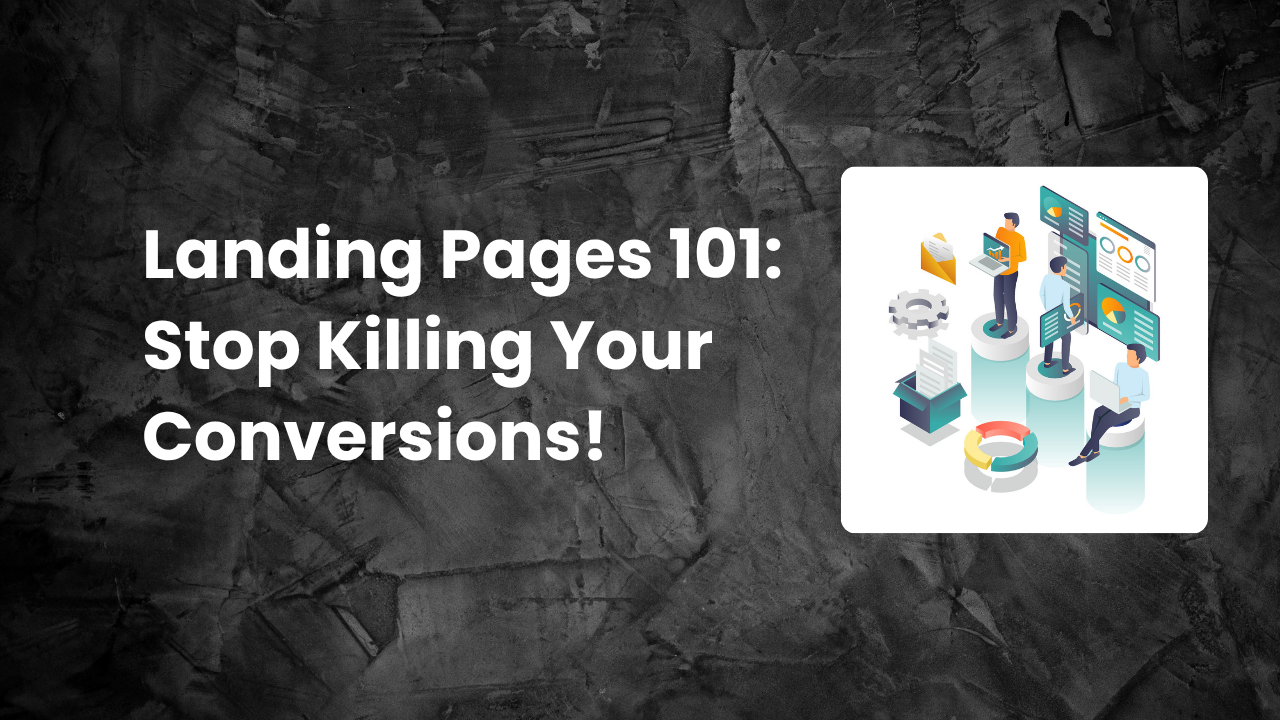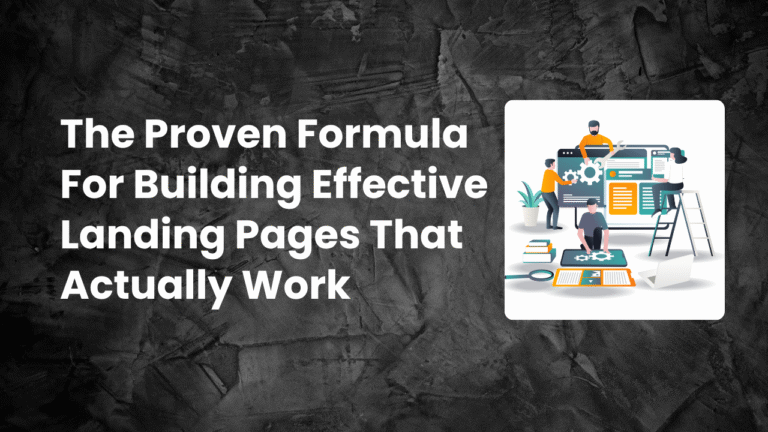Landing page guide is a phrase that pops up frequently in digital marketing conversations. But what does it actually mean? And more importantly, how do you use it to grow your business or online presence?
Landing pages are often the first impression someone has of your brand. They’re not just any old web page—they’re strategically designed to persuade visitors to take a specific action. Whether it’s signing up for a newsletter, downloading an ebook, registering for a webinar, or making a purchase, landing pages are built with conversion in mind.
The importance of landing pages is backed by data. According to HubSpot, businesses with more than 40 landing pages generate 12 times more leads than those with just a few. Another report from Unbounce found that the average landing page conversion rate across industries is 4.02%, but top performers see rates of over 10% (Unbounce Conversion Benchmark Report). That’s a huge gap—and it means there’s plenty of opportunity to do better.
In this complete landing page guide, we’ll explore what makes a landing page effective, how to create one that truly converts, and the psychology behind why visitors click—or don’t. If you’re building your first landing page or trying to improve your current ones, this guide will show you exactly how to get started, what to focus on, and what to avoid.
What Is a Landing Page and Why Does It Matter?
A landing page is a standalone web page designed specifically to capture a visitor’s attention and drive a single, focused action. Unlike a homepage or product catalog, it removes distractions—navigation bars, footer links, or multiple calls-to-action are stripped away. That’s because landing pages are built for one purpose: conversion.
When someone clicks on a Google ad, a Facebook campaign, or even a link in an email, they’re usually taken to a landing page. That page should match the message of the ad and clearly guide the visitor toward completing the goal.
Landing pages are not only important—they’re essential. In fact, companies that use landing pages see 55% more leads on average than those that don’t (MarketingSherpa). And those who optimize their landing pages consistently can increase conversion rates by over 300%.
So, whether you’re running a paid campaign or launching an organic content strategy, landing pages should be part of your toolkit.
The Psychology Behind Landing Pages That Convert
To understand how to create a high-converting landing page, it helps to understand the psychology behind them. At their core, landing pages appeal to emotions, needs, and urgency.
Visitors land on your page because they were curious, interested, or looking for something. Your job is to immediately reassure them that they’re in the right place and that they can trust you. From the headline to the design, everything needs to build confidence and reduce hesitation.
People don’t make decisions rationally. They respond to clear benefits, social proof, and well-crafted messaging. That’s why powerful headlines, testimonials, and trust badges work. They tap into the part of the brain that wants to feel safe and confident.
Even the placement of buttons or the choice of colors can make a difference. For example, using warm colors like orange and red for call-to-action buttons often improves click-through rates because they attract the eye and signal urgency.
The best landing pages guide the user effortlessly from curiosity to action, without making them stop and think too much.
Choosing the Right Goal for Your Landing Page
Before you start designing, writing, or even choosing a template, you need to define a clear goal for your landing page. Everything else will be built around this single objective.
Are you collecting email addresses for your newsletter? Promoting a limited-time offer? Driving free trial signups for a SaaS product? Hosting a webinar or offering a free download?
Each of these goals requires a slightly different approach in terms of copy, design, and layout. The biggest mistake people make is trying to cram too many ideas into one page. That creates confusion—and confused visitors don’t convert.
When your landing page has a singular goal, it becomes far easier to measure success and optimize accordingly. You can test different versions, tweak headlines, or change button colors, but none of it matters if your core message is unclear.
So pick one goal. Stick with it. And build your landing page around making that one action irresistible.
Crafting a Magnetic Headline That Grabs Attention
Your headline is the first thing visitors see, and it determines whether they’ll stay or bounce. In fact, studies suggest that 8 out of 10 people will read a headline, but only 2 will read the rest of the page (Copyblogger).
A great headline does three things. It grabs attention, communicates value, and sets expectations for what the visitor will get. You don’t need to be clever—clarity always beats creativity when it comes to conversions.
For example, instead of “Unlock Your Digital Potential,” a stronger headline might be “Get Your Free Digital Marketing Plan in 5 Minutes.” The second one is clearer, more specific, and directly promises a benefit.
Don’t be afraid to test multiple headlines. Sometimes a small tweak can make a big difference.
Writing Copy That Sells Without Being Pushy
Once your headline gets people to stay, your body copy needs to do the heavy lifting. This is where you explain the value of your offer, answer objections, and build trust.
Start by identifying the biggest problem your audience has. Then show how your product or offer solves that problem. Use simple language. Speak directly to your audience like you’re having a conversation, not giving a lecture.
The best landing page copy focuses on benefits, not just features. Features are what your product does. Benefits are what it means for your audience.
Instead of saying “Our app has real-time alerts,” say “Get instant updates so you never miss a sales opportunity again.”
Every sentence should pull the reader closer to the goal—whether that’s filling out a form, signing up, or buying.
Using Visuals to Support Your Message
Images and videos are not just decoration—they’re communication tools. The right visuals can clarify your offer, add credibility, and keep users engaged.
If you’re offering a product, show it in action. If it’s a service, use screenshots, testimonials, or explainer videos. Studies show that using video on a landing page can increase conversions by up to 86% (EyeView Digital).
Also, make sure visuals are consistent with your brand and support the page’s goal. Avoid using generic stock photos that don’t relate to your content. People can spot insincerity a mile away.
Choose visuals that tell a story or guide the eye toward your call-to-action.
Designing for Simplicity and Focus
Landing page design is about doing more with less. You don’t need flashy animations or endless scrolls. What you need is clarity and focus.
Keep the layout clean, the fonts readable, and the color scheme consistent. Use white space to give breathing room around key elements. Highlight your call-to-action with a contrasting color.
One of the most effective layouts is the “Z pattern” or “F pattern,” where users naturally scan from the top left to the right, then down. Place your headline, benefits, and CTA accordingly.
Mobile responsiveness is also crucial. More than 55% of all web traffic now comes from mobile devices, and landing pages that don’t look good on phones will lose more than half of their potential leads (Statista).
Always preview your landing page on multiple devices and screen sizes before launching.
Building Trust Through Social Proof
No matter how persuasive your copy is, people want proof. They want to know that others have used your product or signed up for your list and gotten results.
This is where social proof comes in. Customer testimonials, reviews, user counts, and trust badges all serve to reassure visitors that you’re credible.
Even something as simple as “Join 5,000+ marketers who’ve already downloaded our free guide” can dramatically increase conversions. Social proof works because it reduces risk and triggers FOMO—fear of missing out.
If you can, include photos and names with testimonials to make them more believable. Video testimonials are even better. The more authentic and specific, the more powerful.
Creating Irresistible Call-to-Action Buttons
Your call-to-action (CTA) is the most important element on the page. It’s what you want the visitor to do—sign up, download, buy, register, or learn more.
Great CTAs are clear, specific, and action-oriented. Instead of “Submit,” use “Get My Free Trial” or “Download the Checklist Now.” These phrases tell the user exactly what they’re getting and make it feel like a benefit, not a task.
Button placement also matters. Your CTA should appear above the fold (the part of the page visible without scrolling) and again at the end of the page. It should stand out visually with a bold, contrasting color.
If your CTA is buried or vague, you’re missing conversions. Make it obvious, make it compelling, and make it easy.
Testing and Optimizing for Higher Conversions
No landing page is perfect on the first try. That’s why testing is crucial. A/B testing allows you to compare different versions of your page—changing one element at a time—to see what works best.
You might test two different headlines, images, or CTA button colors. You might try a long-form page versus a shorter one. The key is to track the results and make data-driven decisions.
Tools like Unbounce, Leadpages, or even Google Optimize make it easy to run tests and measure outcomes.
Sometimes the smallest change—a headline tweak, a button move, or a color swap—can lead to major improvements in your conversion rate. Keep iterating and never stop optimizing.
Conclusion: Your Landing Page Is the Gateway to Growth
In the digital world, your landing page is your storefront. It’s where curiosity meets action and interest becomes commitment. Done well, it becomes one of your most valuable marketing assets.
This landing page guide has walked you through every step—from setting your goal and writing persuasive copy to designing clean layouts, building trust, and testing for improvement. Each step plays a role in creating a page that converts visitors into leads, and leads into customers.
Whether you’re launching your first campaign or refining an existing one, always keep your users in mind. Focus on clarity, simplicity, and emotional connection. When your message is clear and your value is obvious, your landing page will work harder than any salesperson ever could.
You don’t need to be a designer, coder, or copywriter to build a high-converting landing page. You just need the right guide—and now, you’ve got it.
FAQs
What is the difference between a landing page and a homepage?
A landing page is designed for a specific marketing objective, such as generating leads or driving sales, whereas a homepage serves as the main entry point to a website, providing general information about the brand and its offerings.
How can I improve my landing page’s conversion rate?
Improving conversion rates can be achieved by simplifying the design, optimizing content for clarity and engagement, using persuasive CTAs, and regularly testing different elements through A/B testing to determine what resonates best with your audience.
Are landing pages necessary for every online campaign?
While not every online campaign requires a dedicated landing page, they are highly beneficial for campaigns with specific goals, as they help focus user attention and drive desired actions effectively.
How often should I update my landing pages?
It’s advisable to review and update landing pages regularly, particularly when you have new offers or insights from performance analytics. Keeping content fresh and relevant can improve user engagement and conversion rates.
Can I use the same landing page for different marketing channels?
Using the same landing page for different marketing channels can be effective if the messaging aligns with the audience’s expectations. However, tailoring pages to specific channels can enhance relevance and boost conversion rates.





